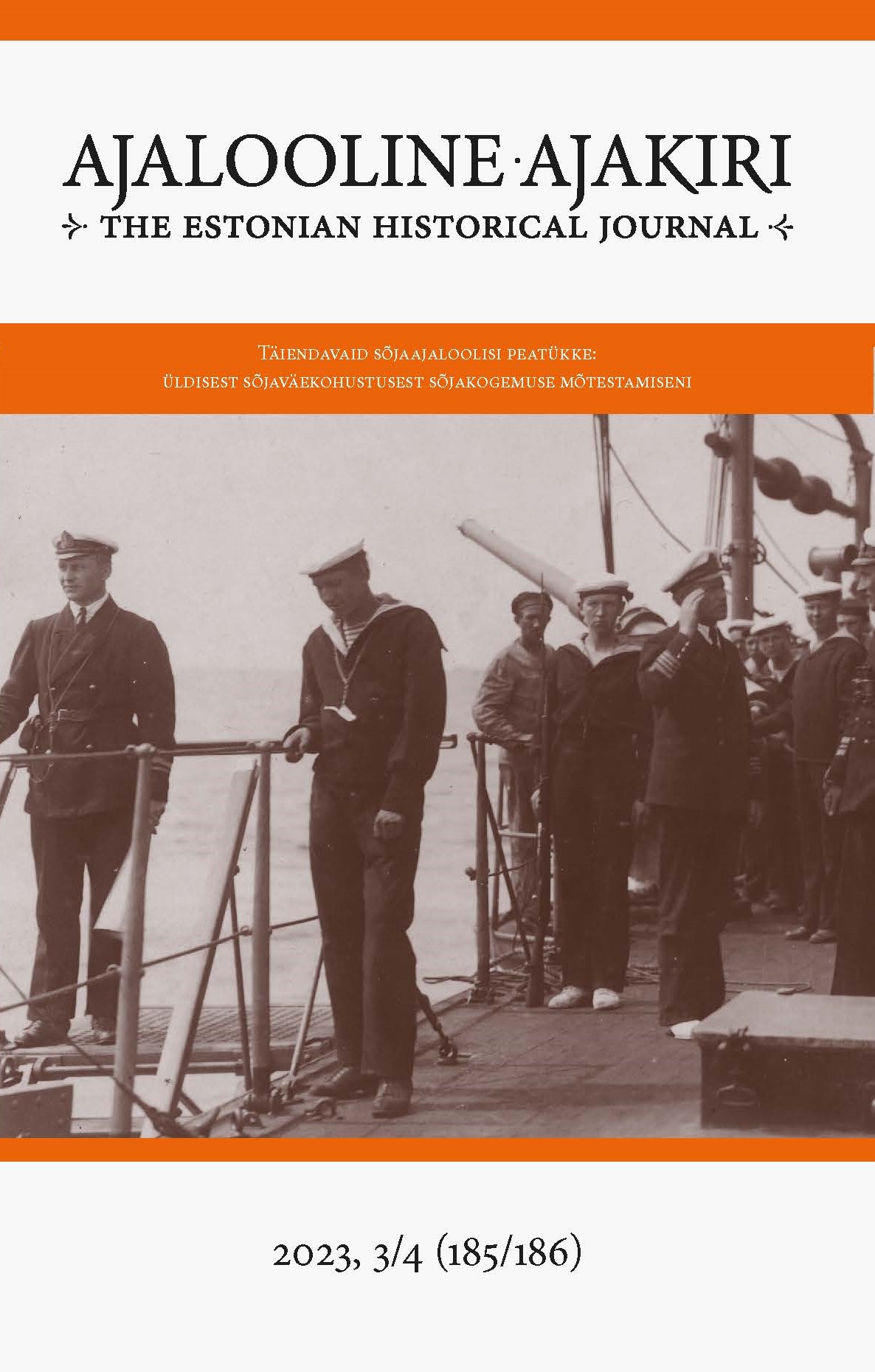Sõjainvaliidide elu ja hoolekanne Eesti Vabariigis 1920. ja 1930. aastatel
DOI:
https://doi.org/10.12697/AA.2023.3-4.06Keywords:
First World War, Estonian War of Independence, war invalid, social services, policy towards veterans, Esimene maailmasõda, Vabadussõda, sõjainvaliid, sotsiaalhoolekanne, veteranipoliitikaAbstract
The life and welfare of disabled soldiers in the Republic of Estonia in the 1920s and 1930s
World War I and the Estonian War of Independence were two devastating wars that had a huge impact on the Republic of Estonia and its people. During both wars, tens of thousands of men were conscripted, many of whom did not return from the battlefields. It is estimated that around 10,000 men died or were listed as missing in action during WWI. Another 5,889 dead and 13,775 wounded from the Estonian War of Independence can be added to this number as war casualties. While most soldiers returned home from the war with none or minor injuries, some came back with injuries that had mutilated their bodies. These men had trouble coming to grips with the new situation they found themselves in and needed help from their government. Right after the Independence War, from 1920 to 1922, it was reported that there were at least 3,000 disabled soldiers living in Estonia.
The aim of this article is to explore the welfare system that was in use in Estonia during the 1920s and 1930s and its impact on the post-war lives of invalids. Laws and regulations published in the Riigi Teataja in the 1920s and 1930s have been used to describe the welfare system, alongside articles from the newspaper Invaliid, which provide insights into how disabled soldiers viewed the welfare system. Notice sheets from archival subcollection no. 1652 on disabled veterans from the Tallinn department of the Eesti Vigastatud Sõjameeste Ühing (Estonian Disabled Soldiers Union) have also been used to gain an understanding of the socioeconomic situation and the actual effects of the law. These sheets contain up to 30 questions that disabled soldiers had to answer when joining the union. Their analysis provides an insight into the lives and wellbeing of disabled soldiers during the 1920s and 1930s, along with an improved understanding of their situation.
The welfare system for disabled soldiers that was in use in the Republic of Estonia in the 1920s and 1930s focused mainly on maintaining the wellbeing of veterans of the Estonian War of Independence and of people who became disabled in the military during the interwar period. This left tsarist Russian Army veterans in a very poor economic situation. Veterans from the Independence War could receive pensions that were up to five times larger than the pensions of WWI veterans. They also received far more support in other fields, such as medical aid and transportation. This all stemmed from the idea that the Estonian Republic should support only those disabled soldiers who had been injured fighting for their country. It was felt that men who had been disabled while fighting in the tsarist Russian Army should receive their pension from the nation they had fought for.
Analysis of Estonian Disabled Soldiers Union notice sheets of disabled veterans from the Tallinn department indicates that a considerable number of disabled soldiers lived in poverty. Most of its members were WWI veterans who had suffered at least a 50 percent loss of ability to work. If they were able to, most of them worked as farmhands and factory workers. Those who could not work received a small pension that was insufficient for living. Few disabled soldiers had other wealth in the form of property. Additionally, at least half of the members were married and had children to support.
While the monetary support provided by the government played a significant role in the wellbeing of disabled soldiers, the aspect of support and understanding from the rest of the population cannot be cast aside. The population’s attitude towards disabled soldiers was very mixed. As was the case in the welfare system, veterans of the Independence War were treated more fondly than tsarist Russian Army veterans, but the people could rarely differentiate the two on a war basis. As a result, all disabled soldiers experienced the same attitude towards them on the part of their compatriots, which generally ranged from passive understanding to complete disgust. This disappointed disabled soldiers since they saw themselves as heroes who had given everything for their compatriots but did not even earn their respect in return.
Downloads

